Giles MacDonogh (born 1955) is a British writer, historian and translator.
Giles MacDonogh (born 1955) is a British writer, historian and translator.
MacDonogh has worked as a journalist, most notably for the Financial Times (1988–2003), where he covered food, drink and a variety of other subjects. He has also contributed to most of the other important British newspapers, and is a regular contributor to The Times . As an historian, MacDonogh concentrates on central Europe, principally Germany.
He was educated at the City of London School and Balliol College, Oxford, where he read modern history. He later carried out historical research at the École pratique des hautes études in Paris.
MacDonogh is the author of fourteen books, chiefly about German history; he has also written about gastronomy and wine. In 1988 he won a Glenfiddich Special Award [1] for his first book, A Palate in Revolution (Robin Clark) and was shortlisted for the André Simon Award.[ citation needed ] His books have been translated into French, Italian, Bulgarian, German, Chinese, Slovakian, Spanish, Russian and Polish.
Reviewing 1938: Hitler’s Gamble in Spectator Magazine , Graham Stewart said: "Giles MacDonogh has repeatedly shown himself to be in the front rank of British scholars of German history. The depth of his human understanding, the judiciousness of his pickings from source material and the quality of his writing make this book at once gripping and grave." [2]
MacDonogh criticised the 2004 German film Downfall for sympathetic portrayals of Wilhelm Mohnke and Ernst-Günther Schenck. Mohnke was rumoured, but never proven, to have ordered the execution of a group of British POWs in the Wormhoudt massacre near Dunkirk in 1940, while Schenck's experiments with medicinal plants in 1938 allegedly led to the deaths of a number of concentration camp prisoners. [3] In response, the film's director stated he did his own research and did not find the allegations as to Schenck convincing. Mohnke strongly denied the accusations against him, telling historian Thomas Fischer, "I issued no orders not to take English prisoners or to execute prisoners." [4]
His latest book is The Great Battles (2010).[ citation needed ]
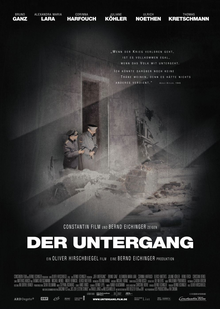
Downfall is a 2004 historical war drama film written and produced by Bernd Eichinger and directed by Oliver Hirschbiegel. It is set during the Battle of Berlin in World War II, when Nazi Germany is on the verge of total defeat, and depicts the final days of Adolf Hitler. The cast includes Alexandra Maria Lara, Corinna Harfouch, Ulrich Matthes, Juliane Köhler, Heino Ferch, Christian Berkel, Alexander Held, Matthias Habich, and Thomas Kretschmann. The film is a German-Austrian-Italian co-production.

Adolf Hitler, chancellor and dictator of Nazi Germany from 1933 to 1945, committed suicide via a gunshot to the head on 30 April 1945 in the Führerbunker in Berlin after it became clear that Germany would lose the Battle of Berlin, which led to the end of World War II in Europe. Eva Braun, his wife of one day, also committed suicide by cyanide poisoning. In accordance with Hitler's prior written and verbal instructions, that afternoon their remains were carried up the stairs and through the bunker's emergency exit to the Reich Chancellery garden, where they were doused in petrol and burned. The news of Hitler's death was announced on German radio the next day, 1 May.

Blondi was Adolf Hitler's German Shepherd, a gift as a puppy from Martin Bormann in 1941. Hitler kept Blondi even after his move into the Führerbunker located underneath the garden of the Reich Chancellery on 16 January 1945.
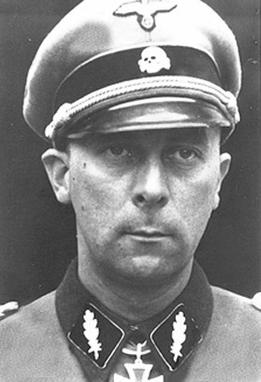
Wilhelm Mohnke was a German military officer who was one of the original members of the SchutzstaffelSS-Stabswache Berlin formed in March 1933. Mohnke, who had joined the Nazi Party in September 1931, rose through the ranks to become one of Adolf Hitler's last remaining general officers at the end of World War II in Europe.
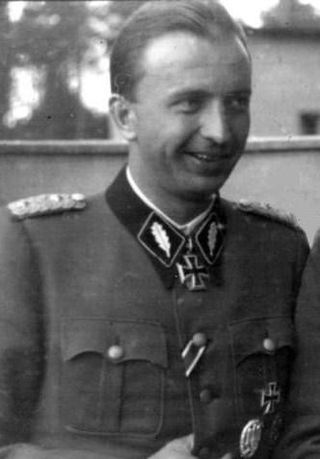
Hans Otto Georg Hermann Fegelein was a high-ranking commander in the Waffen-SS of Nazi Germany. He was a member of Adolf Hitler's entourage and brother-in-law to Eva Braun through his marriage to her sister Gretl.

Ernst-Günther Schenck was a German medical doctor and member of the SS in Nazi Germany. Because of a chance encounter with Adolf Hitler during the closing days of World War II, his memoirs proved historically valuable. His accounts of this period are prominent in the works of Joachim Fest and James P. O'Donnell regarding the end of Hitler's life, and were included in the film Downfall (2004).

Constanze Manziarly was born in Innsbruck, Austria. She served as a cook and dietitian to Adolf Hitler until his final days in Berlin in 1945.
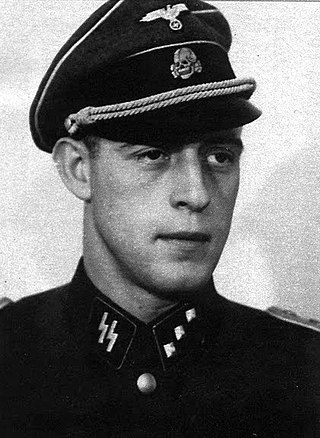
Otto Günsche was a mid-ranking officer in the Waffen-SS of Nazi Germany during World War II. He was a member of the SS Division Leibstandarte before he became Adolf Hitler's personal adjutant. Günsche was taken prisoner by soldiers of the Red Army in Berlin on 2 May 1945. After being held in various prisons and labour camps in the Soviet Union, he was released from Bautzen Penitentiary on 2 May 1956.

Wilhelm Brückner was Adolf Hitler's chief adjutant until October 1940. Thereafter, Brückner joined the Heer (army), becoming an Oberst (colonel) by war's end. He died on 18 August 1954 in then West Germany.

The Wormhoudt massacre was the mass murder of 81 British and French POWs by Waffen-SS soldiers from the 1st SS Division Leibstandarte SS Adolf Hitler during the Battle of France in May 1940.
Wilhelm Zander was an adjutant to Martin Bormann during World War II. He died in Munich in 1974.

Werner Haase was a professor of medicine and SS member during the Nazi era. He was one of Adolf Hitler's personal physicians. After the war ended, Haase was made a Soviet prisoner of war. He died while in captivity in 1950.

Eva Anna Paula Hitler was a German photographer who was the longtime companion and briefly the wife of Adolf Hitler. Braun met Hitler in Munich when she was a 17-year-old assistant and model for his personal photographer, Heinrich Hoffmann. She began seeing Hitler often about two years later.
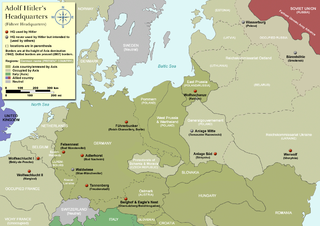
The Führer Headquarters, abbreviated FHQ, were a number of official headquarters used by the Nazi leader Adolf Hitler and various other German commanders and officials throughout Europe during World War II. The last one used, the Führerbunker in Berlin, where Hitler committed suicide on 30 April 1945, is the most widely known headquarter. Other notable headquarters are the Wolfsschanze in East Prussia, where Claus von Stauffenberg in league with other conspirators attempted to assassinate Hitler on 20 July 1944, and Hitler's private home, the Berghof, at Obersalzberg near Berchtesgaden, where he frequently met with prominent foreign and domestic officials.

Edda Carin Wilhelmine Göring was the only child of German politician, military leader, and leading member of the Nazi Party Hermann Göring, by his second marriage to the German actress Emmy Sonnemann.
Heinz Lorenz was German Chancellor Adolf Hitler's Deputy Chief Press Secretary during World War II.
Fritz Tornow was a Feldwebel in the German Army who served as Adolf Hitler's personal dog-handler. He was one of the last people to occupy the Führerbunker when the underground complex was captured by Soviet Red Army troops.
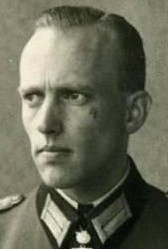
Willy Johannmeyer was a German officer during World War II who served from 1939 to 1945. He was also a recipient of the Knight's Cross of the Iron Cross with Oak Leaves, and at the time of the dissolution of Nazi Germany, the last adjutant to Adolf Hitler of the army (Heeresadjutant).
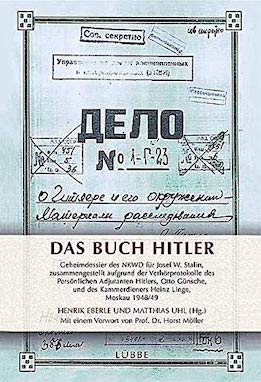
The Hitler Book: The Secret Dossier Prepared for Stalin is the 2005 publication of a long-secret Soviet report on the life of Adolf Hitler written at the behest of Joseph Stalin. It was edited and translated into German by Matthias Uhl and Henrik Eberle.
Henrik Eberle is a German historian. During the first decade of the twenty-first century he came to prominence beyond the confines of the German academic community with compilations, books, articles and interviews concerned with Adolf Hitler. Some of these have been translated into English.